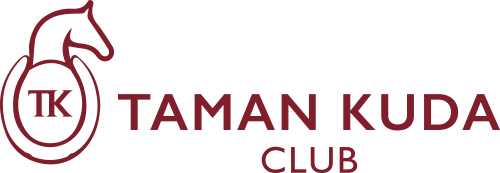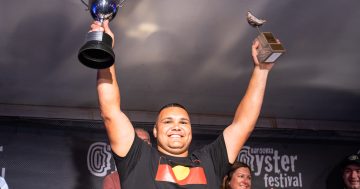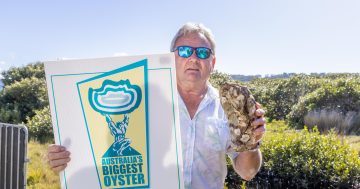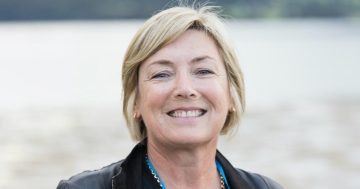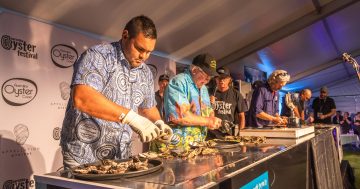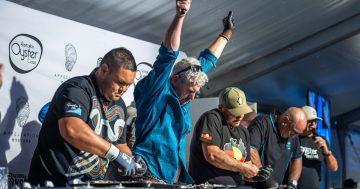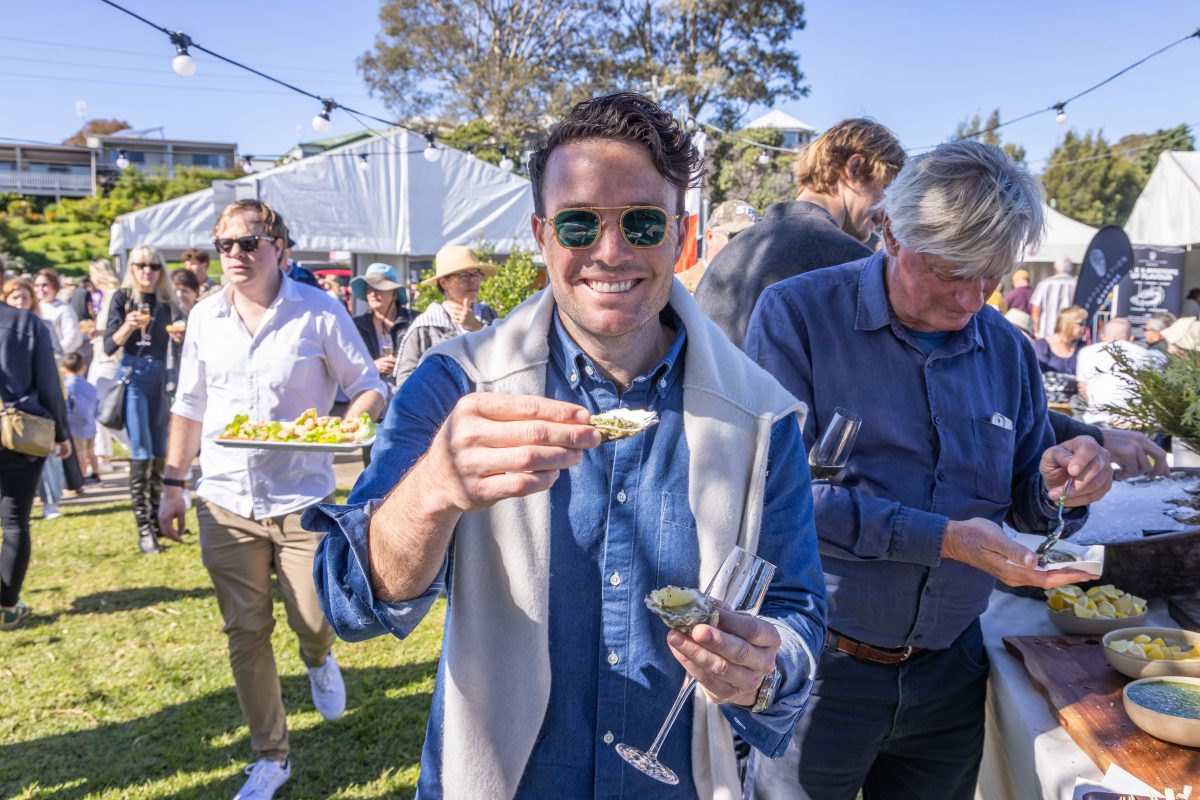
The Narooma Rock Oyster Festival invites you to discover what makes the South Coast a wonderful place to visit all year round. Photos: Narooma Oyster Festival.
As the South Coast heads into what’s traditionally a quieter time of the year for seaside tourism, the Narooma Rock Oyster Festival beckons families back to the picturesque Wagonga Inlet with a weekend of music, fun and irresistible food from both sea and land.
While some ticketed events sell out fast, it’s the core program — open to all — that creates the festival’s signature carnival buzz.
Set against a sparkling waterfront backdrop, the festivities kick off on Friday, 2 May, with live music from 4 pm, roving entertainment including the quirky “Pied Piper” Disco Duk Duk and his silent disco walking tour, as well as a mouthwatering lineup of food trucks serving far more than just seafood. The evening wraps at 8:30 pm with a sky-splitting fireworks display — picnic blankets encouraged.
The party hits full stride on Saturday as a stellar lineup of local and visiting musicians takes over the main stage, headlined by hard-edged indie folk band Whiskey Dram. Market stalls, cookware giveaways, face painting, roving performers, oyster and liquor bars, and more create an atmosphere where the only challenge is deciding what to try next.
Among the crowd-pleasers, Oyster Farmers Alley is a standout. Here, visitors meet farmers from the Shoalhaven to the Victorian border, sampling oysters with distinct ‘merroir’ (the unique taste and texture imparted by their growing environment).
“Some are creamy, some are more mineral, and others — like our Wagonga Inlet oysters — are saltier,” says Narooma Rocks Chair Cath Peachey. “It’s the perfect chance to taste the difference and find your favourite.”
Fret not if this revered mollusc is not your cup of tea. From 10:30 am to 3 pm, top chefs — including Merivale’s Clayton Wells, Narooma’s own Allan Newbold, and acclaimed First Nations chef Nornie Bero — will host live cooking demos, transforming local ingredients into dishes that are both inventive and mouthwatering.
“If you want to do nothing but sit back, watch incredible food being made, and maybe even get a taste — this is your festival,” Cath says. “Unlike city events, here you can get up close and personal with the chefs and farmers.”
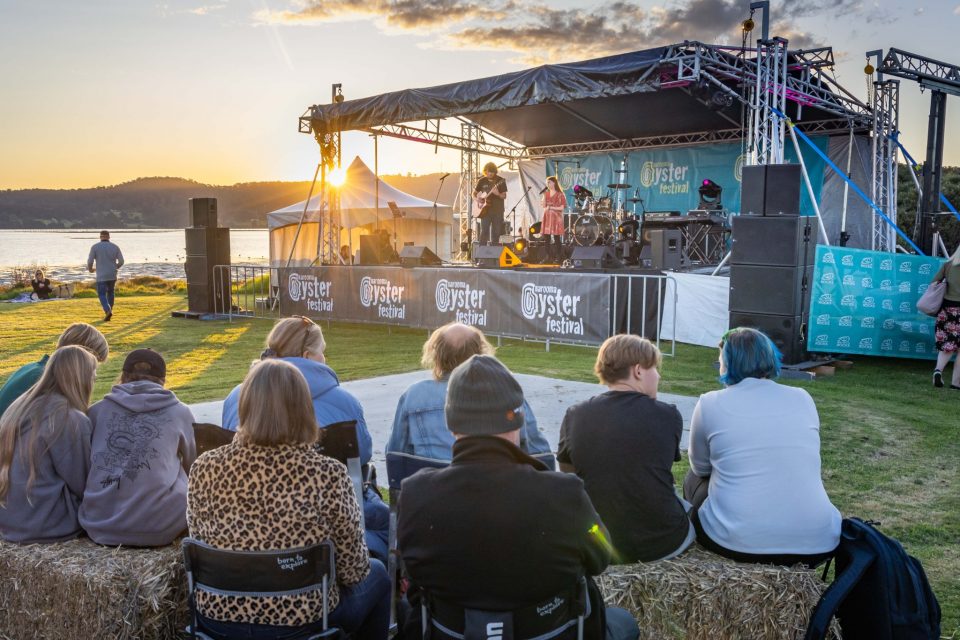
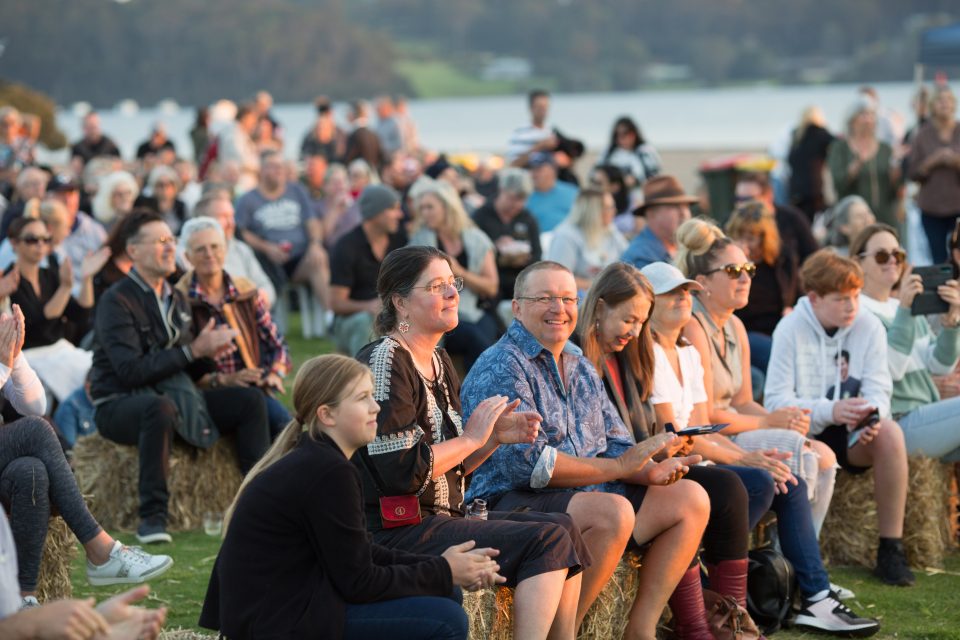
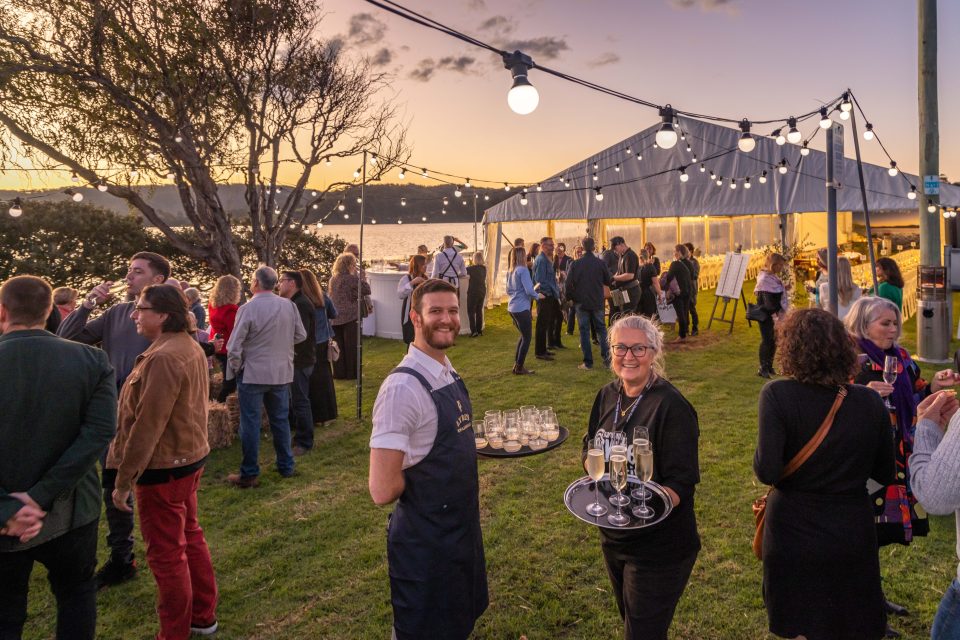
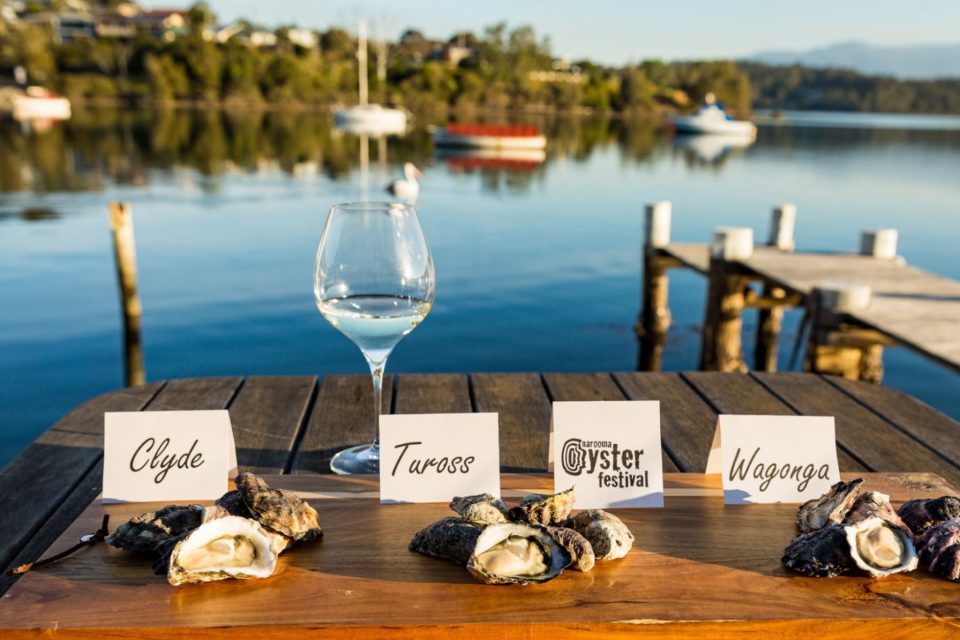
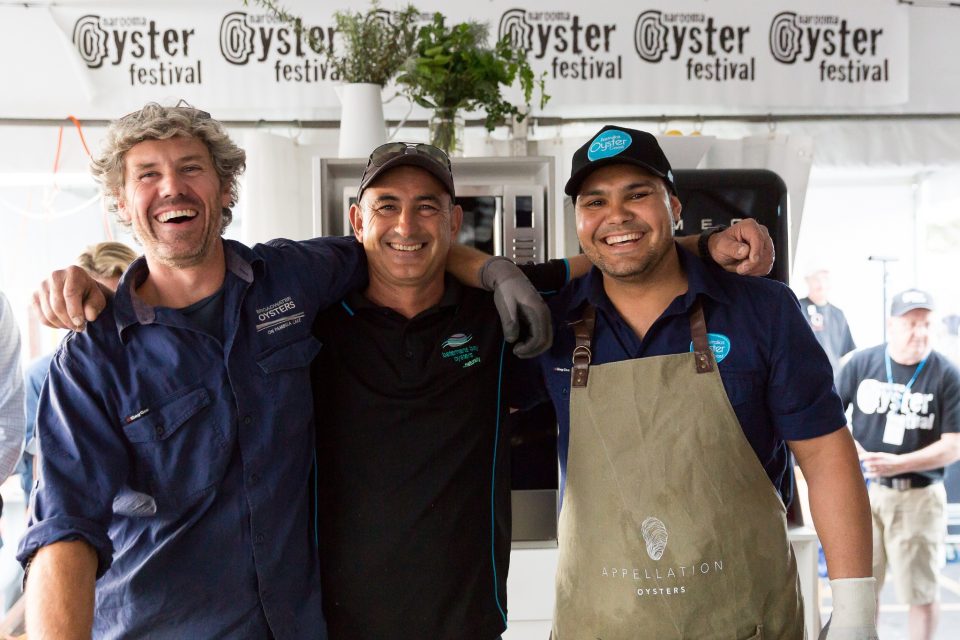

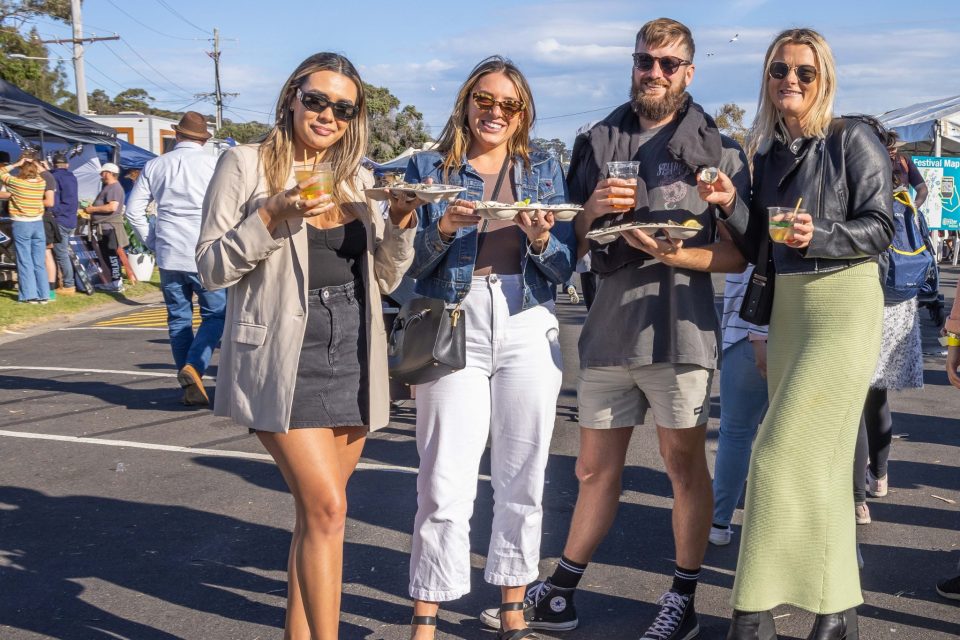
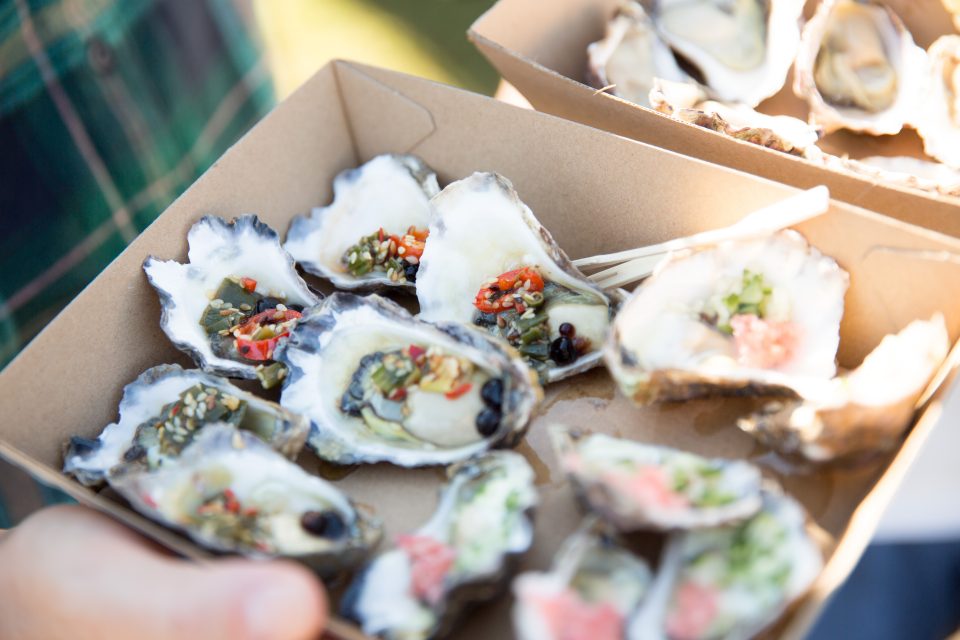
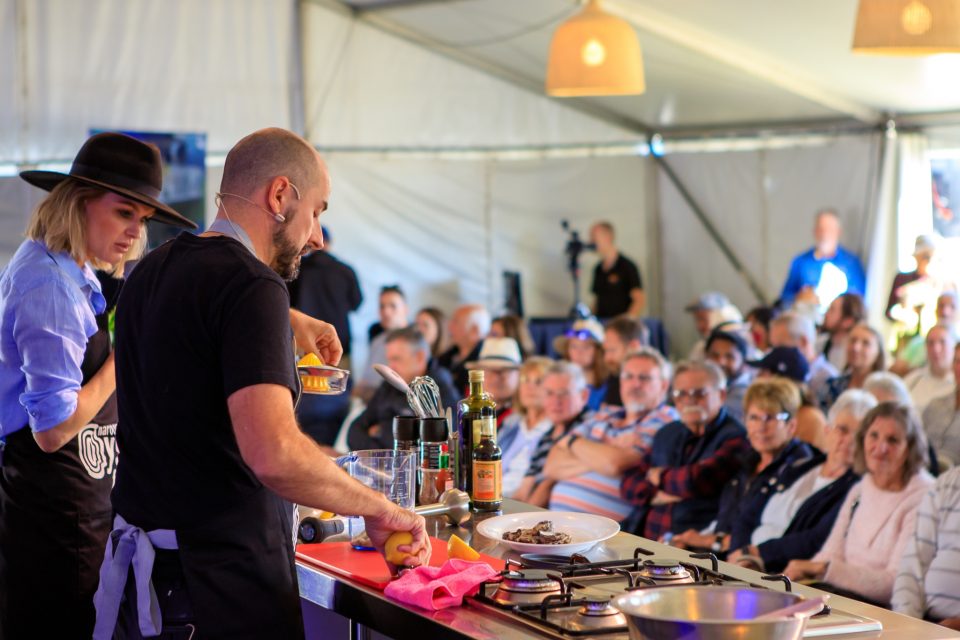
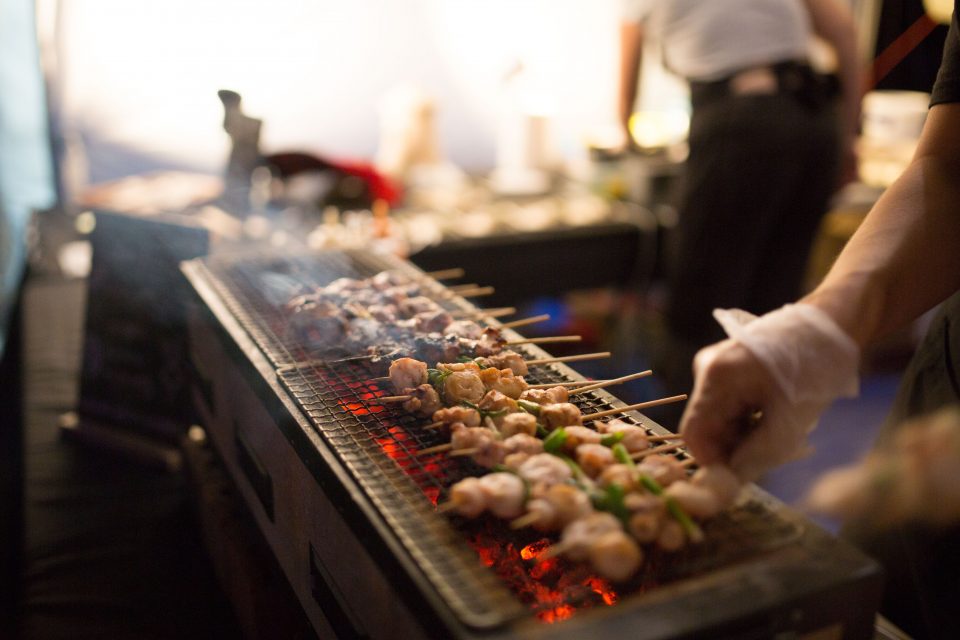


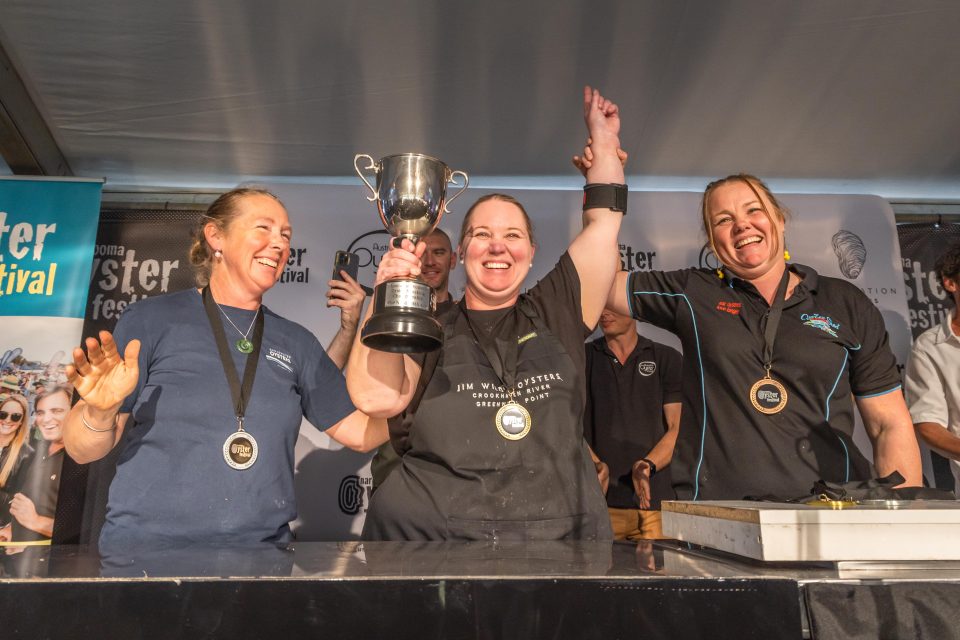
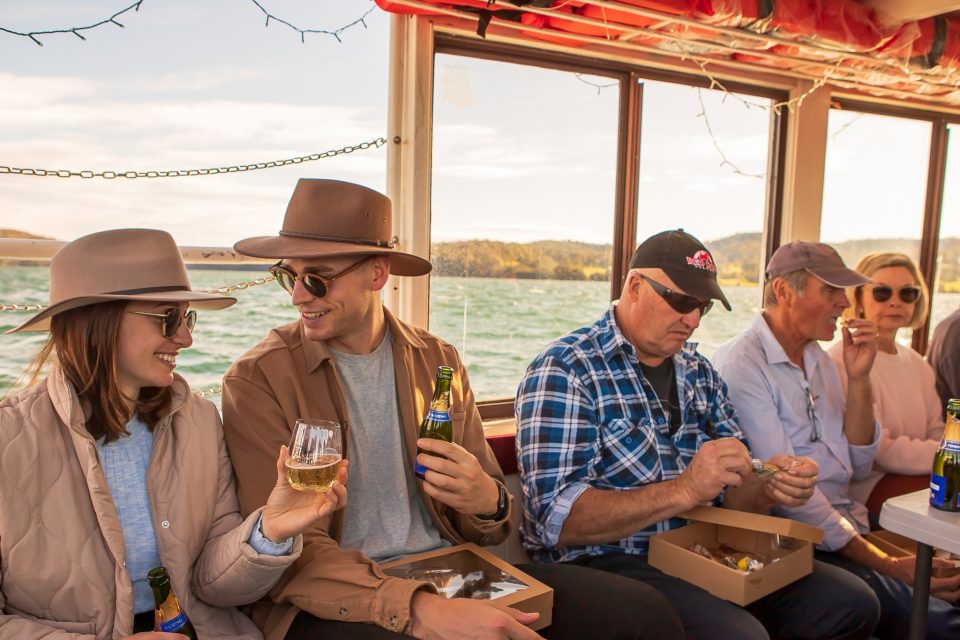
One of the weekend’s quirkiest highlights returns at 11:45 am on Saturday: the Biggest Oyster Competition. Hosted by Aussie journalist Simon Marnie, the event showcases enormous oysters — often over 2.5 kilograms — paraded onstage like prize pets.
Last year’s winner, Jill the oyster, weighed a world-record-breaking 3 kg before her untimely demise in recent floods, leaving this year’s title wide open.
Wrapping up Saturday’s big events is what Cath describes as ‘Narooma’s Melbourne Cup’: the Oyster Shucking Championships, starting at 3:30 pm. Competitors race against the clock for both speed and precision. The ultimate prize is a ticket to the world championships in Ireland.
“This is an event that has to be seen to be believed – it’s electric,” Cath says.
“Competitors are judged not only on speed but on technique. They can lose time if there’s grit in the shell or if they nick the meat. Nick yourself and it’s instant disqualification.”
Sunday morning sees the festival wind down with Narooma’s Biggest Breakfast, a community fundraiser hosted by the local chamber of commerce, featuring 20Chapel founder and ex-Rockpool executive chef Corey Costelloe on the pans. This is where the festival’s grand raffle winner will also be drawn, with an MG-ZS Excite car up for grabs.
Accommodation in Narooma is tight, but with coaches running from Batemans Bay to Merimbula, the entire south coast becomes part of the celebration.
“The festival gives visitors plenty of reasons to come and see for themselves that the south coast is a wonderful place to come all year round,” Cath says.
The Narooma Oyster Festival runs from Friday, 2 May, to Sunday, 4 May. Adult general admission is from $25, and children under 16 are free when accompanied by a ticketed adult.
Original Article published by Dione David on Region Canberra.




